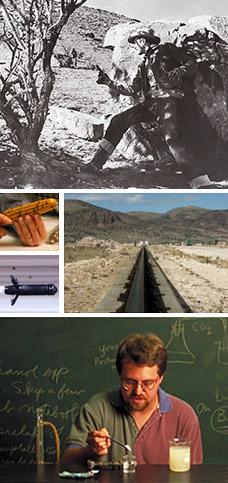
urned head. Contemplation of the sky is the grace and curse of hum
anity. Thus the Indian creates the rational element in his cosmology through his equation of the worldhouse with his own staired house, which is entered by way of a ladder. But we must be careful not to regard this worldhouse as a simple expression of a spiritually tranquil cosmology; for the mistress of the worldhouse remains the uncanniest
of creatures: the serpent. The Pueblo Indian is a hunter as well as a tiller of the soil-if not to the same extent as the savage tribes that once lived in the region. He depends for his subsistence on meat as well as on corn. The masked dances, which at first seem to us like festive accessories
to everyday life, are in fact magical practices for the social provision of food. The masked dance, upon which we might ordinarily look as a form of play, is in its essence an earnest, indeed warlike, measure in the fight for existence. Although the exclusion of bloody and sadistic practices makes these dances fundamentally different from the war dances of the nomadic Indians, the Pueblos' worst enemies, we must 's facilities include a 40-square-mile field laboratory that includes more than 30 separate test sites, gun ranges, and research laboratories.
not forget that these
- remain, in their origin and in
- ner tendency, dances of plunder and sacrifice. When the hunter or tiller of
- Dr. Christa Hockensmith, Head of Chemistry Laboratories, the s
- oil masks himself, transforms himself into a
- n imitation of his booty-be that aniI7 mal or cor
- n-he believes th, Ordnance Supervisor, at th
- rough mysterious, mimic transformation he w
- ill be able to. procure in advance what
he coterminous
- ly strives to achieve through his sober, vigilant work as tiller and hunter.
- The dances are expressions of applied magic. The social
provision o
- f food is schizo
- id: magic and te
chnology work together.
Contact Information
ebeneinander] of logical civilization and fantastic, magical causation shows the Pueblo Indian
s' peculiar c
New Mexico Tech/EMRTC
ondition of hyb
ridity and transi
tion. They are clea
rly no longer pri
Email: mitives dependent on their
senses, for whom
no action directed toward the future can exist; but neither are they technologically secure Europeans, for whom future events are expected to be organically or mechanically determined. They stand on middle ground between magic and logos, or by contacting Dana Stocks at and their instrument of orientation is the symbol. Betw

